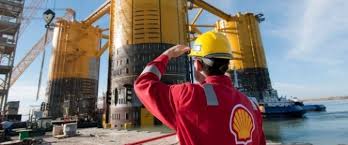Shell announced on Thursday that it redirected $7 billion of its cash flows to settle huge oil and gas margin calls, making it the first business to officially admit the strain commodities dealers experienced in 2022 as a result of severe price spikes and volatility.
Shell, along with other major corporations, utilities, trading houses, and banks, signed a letter in March urging governments and financial institutions, such as central banks, to establish an emergency liquidity mechanism to help energy markets cope with the extreme volatility caused by Russia’s invasion of Ukraine.
“Inventory price rises have resulted in a financial outflow of roughly $7 billion. Due to the unprecedented volatility in commodity prices, material additional movements in (operating cash flow) were seen as a result of derivatives margining effects, changes in inventory volumes, and accounts payable and receivable. In a statement released ahead of its May 5 earnings release, the company stated.
Royal Bank of Canada assessed the oil company’s net income in the first quarter to be $8.7 billion to $9.1 billion and overall cash flow to be between $16 billion and $17 billion in a research note, assuming about $3 billion of the figure reported by Shell was attributable to margining issues.
The entire cost of running a firm has increased for dealers. As exchanges and clearing members increased margin requirements across metals, agricultural products, and energy, commodity companies have had to regularly call banks for extra cash and reduce traded volumes to stay afloat.
Markets have become dysfunctional as a result, according to the world’s leading trading corporations, particularly Dutch wholesale gas futures, which are used to hedge liquefied natural gas (LNG). Shell is the largest LNG trader in the world.
The initial margin is cash or collateral submitted to the clearinghouse by clearing members to offset potential losses in the event of a clearing member default.
Margin calls occur when the difference between the current spot price and the future sale price grows too large, compelling traders to increase the amount of money they have on hand at the exchange for each trade. In less harsh times, this would normally be 10% to 15% of the contract value as confirmation of their ability to deliver.
When the physical product travels, the hedging expenses are eventually recouped.
In mid-2021, one of the European Federation of Energy Traders (EFET) energy producer members reported an initial margin of 1 billion euros ($1.10 billion) in natural gas futures, according to the letter. The same position required 6 billion euros ($6.63 billion) to back it earlier this month.
Exxon Mobil, BP, Cheniere, RWE, Engie, EDF, Citi Group, Morgan Stanley, and the world’s largest energy dealers Vitol, Trafigura, Mercuria, and Gunvor were also signatories to the letter.

















